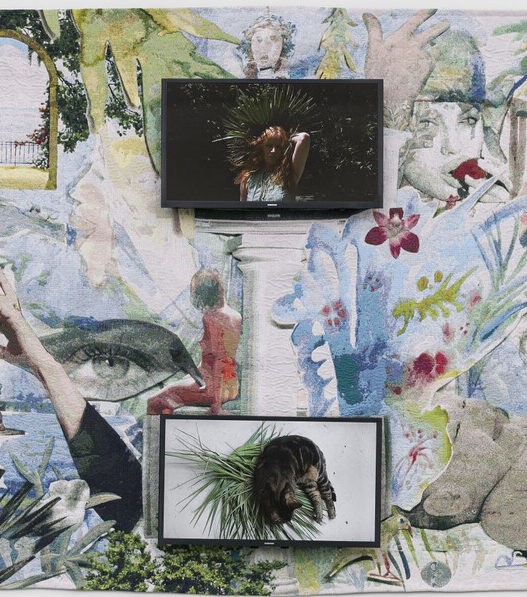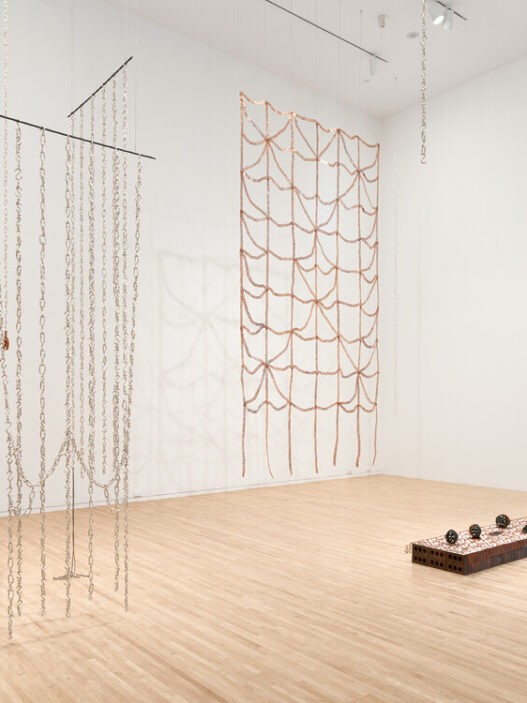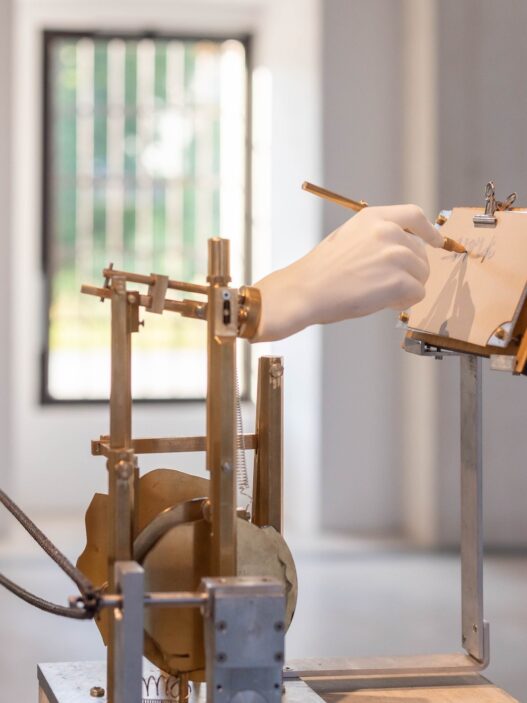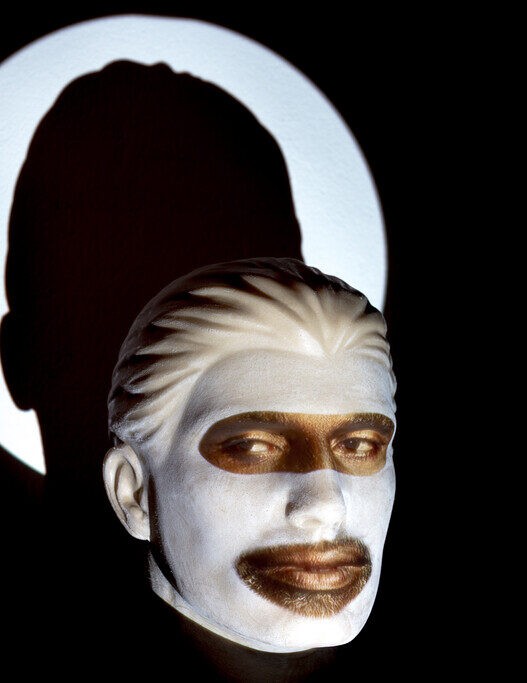Pauline Curnier Jardin
Pour la peau de Jessica Rabbit
July 2, 2022–January 8, 2023
Pauline Curnier Jardin is a visual artist, filmmaker, and performer who was born in Marseille in 1980. Her allusions span a wide range, from Greco-Roman mythology to folklore, from different religious practices to paganism. The films and installations, which she frequently imagines as theatrical stages, are reminiscent of play areas or places where people go to have fun, like circuses, cabarets, carnivals, or fun fairs, where all identities, as well as all forms of crossdressing and gender reversal, are acceptable. Pauline Curnier Jardin records a variety of rites, including processions, pilgrimages, and votive festivals, in a sort of wild and organic ethnology.
Her language borrows heavily from extravaganzas as well as horror or Z movies, and it is full of bizarre characters that are both hideous and difficult to categorize, as well as outcasts who wander the edges of cities and challenge social and gender norms.
The historical or mythological individuals at the center of several movies (Saint Agatha, Bernadette Soubirous, etc.) are revisited and transformed into people who challenge stereotypes and conventional wisdom while exposing the audience to liminal states that undermine our perception of morality and taste.
You can delve deeply into Pauline Curnier Jardin’s realm of plastic works and videos by attending the exhibition at the Crac. The show is the artist’s biggest one in France to date. A number of exhibits were developed specifically for the Crac Occitanie’s spaces, allowing visitors to view movies, drawings, and other media while walking between a giantess’s legs, within a giant placenta, or in an archaeological diorama.
Together with the stage designer, costume designer, and dancer Rachel Garcia, the entire exhibition was created.
Curator: Marie Cozette
Diana Policarpo
Les filets d’hyphes
Nets of Hyphae
July 2–31, 2022
Les filets d’hyphes (Nets of Hyphae) weaves together a number of narratives and visual depictions related to the usage of plants, fungi, and bacteria by women and minorities as a type of alternative knowledge and technology providing access to one’s own body at the frontier of modern medicine. Diana Policarpo investigates the history of Claviceps purpurea, better known as ergot of rye, a fungus that lives as a parasite on grasses and was the source of St. Anthony’s Fire sickness in the Middle Ages, through a mix of movies, sound pieces, and silkscreen prints on fabric. This fungus, which is found in the rye used to make bread, caused burns and hallucinations when consumed.
Women have historically employed ergot of rye in tiny amounts to aid in childbirth, facilitate abortions, or cure post-partum hemorrhage. The hegemonic narratives created by contemporary science largely destroyed the curative knowledge used by healers and midwives, paving the way for obstetric medicine as a patriarchal tool for the control and reproduction of bodies. The oral history of the transformation and alchemical processes of this parasite as well as the interspecies relationships that feminist activists are trying to resurrect in artisanal gender hacking and DIY gynecology workshops were rendered invisible by Albert Hoffmann’s discovery of LSD in the 1930s and the laboratory synthesis of ergot.
In collaboration with Anozero’21-22—Coimbra Biennial of Contemporary Art, this exhibition was created (Portugal). The Galeria Municipal do Porto and the Kunsthall Trondheim, which co-produced Diana Policarpo’s installation, previously displayed it (curator Steffi Hessler). Additionally, the Calouste Gulbenkian Foundation’s Delegation in France is funding this exhibition.
Curators : Elfi Turpin and Filipa Oliveira
Centre régional d’art contemporain Occitanie/Pyrénées-Méditerranée
26 quai Aspirant Herber
34200 Sète
France
Hours: Wednesday–Monday 12:30–7pm,
Saturday–Sunday 2–7pm
T +33 4 67 74 94 37
[email protected]




















